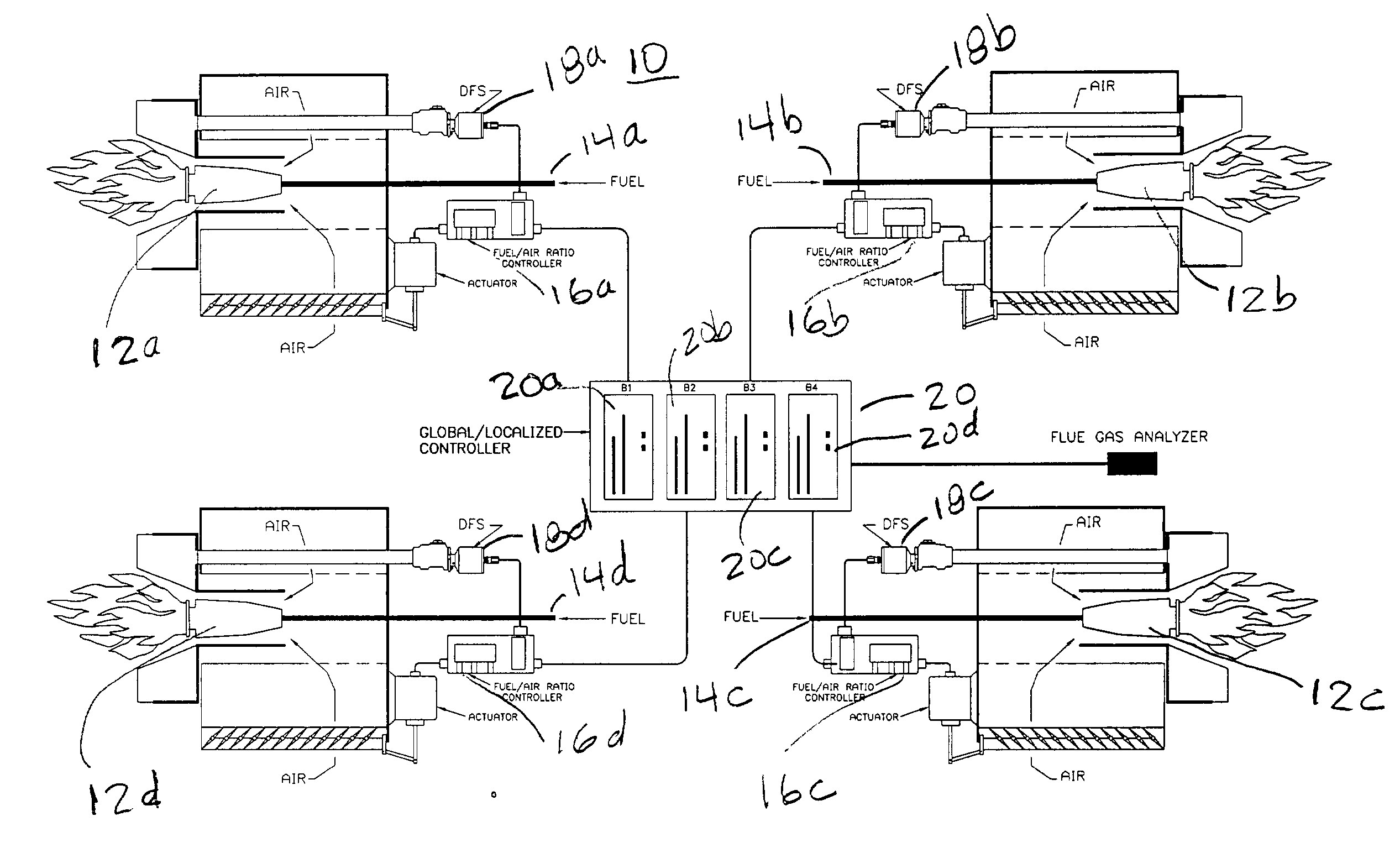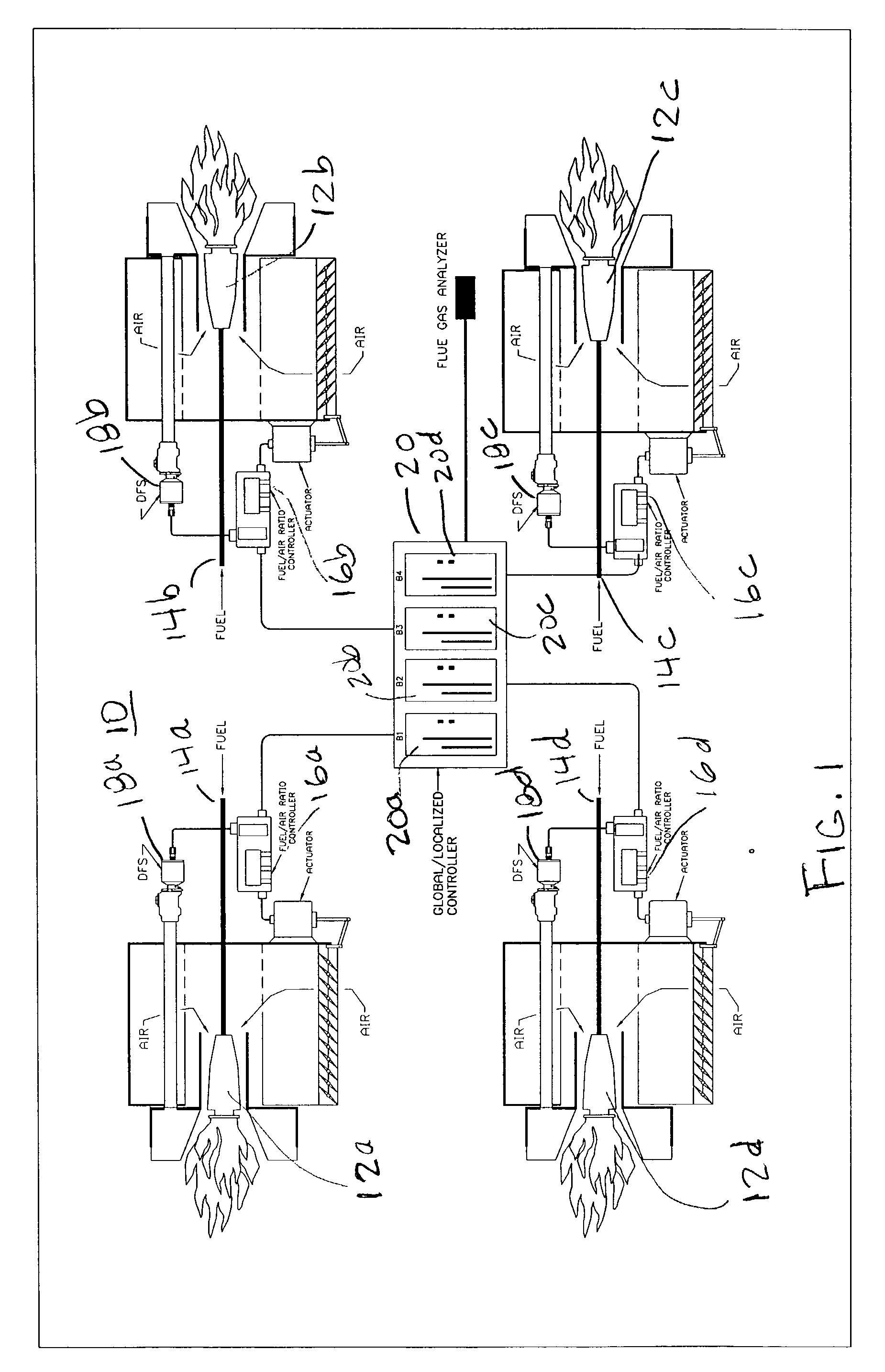Combustion emission estimation with flame sensing system
- Summary
- Abstract
- Description
- Claims
- Application Information
AI Technical Summary
Benefits of technology
Problems solved by technology
Method used
Image
Examples
Embodiment Construction
(s)
[0037] The present invention is described below in connection with the control of a a particular combustion byproduct formation rate, namely, NOx formation rate, and the embodiment described herein uses a DFS to sense the flame at a burner. As will be appreciated by those of ordinary skill in the art after reading this description of the preferred embodiment, the present invention can be used to control the formation rate of any combustion byproduct and can use any flame scanner that meets the criteria described herein.
[0038] NOx is formed from several sources and can, depending on the source, be classified as fuel NOx, thermal NOx and prompt NOx. Fuel NOx comes from the oxidation of organically bound nitrogen in fuel and is affected by the mixing of fuel and air and by the local 02 cone as well. Thermal NOx results from the thermal fixation of molecular N.sub.2 and O.sub.2 in the combustion air at a temperature higher than 2000.degree. F. The formation of thermal NOx is extremel...
PUM
 Login to View More
Login to View More Abstract
Description
Claims
Application Information
 Login to View More
Login to View More - R&D
- Intellectual Property
- Life Sciences
- Materials
- Tech Scout
- Unparalleled Data Quality
- Higher Quality Content
- 60% Fewer Hallucinations
Browse by: Latest US Patents, China's latest patents, Technical Efficacy Thesaurus, Application Domain, Technology Topic, Popular Technical Reports.
© 2025 PatSnap. All rights reserved.Legal|Privacy policy|Modern Slavery Act Transparency Statement|Sitemap|About US| Contact US: help@patsnap.com



